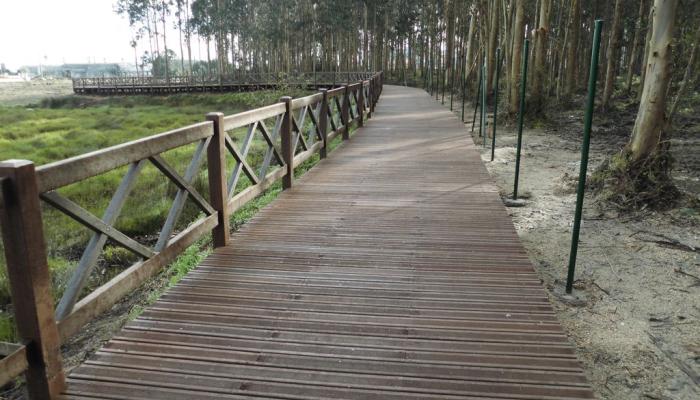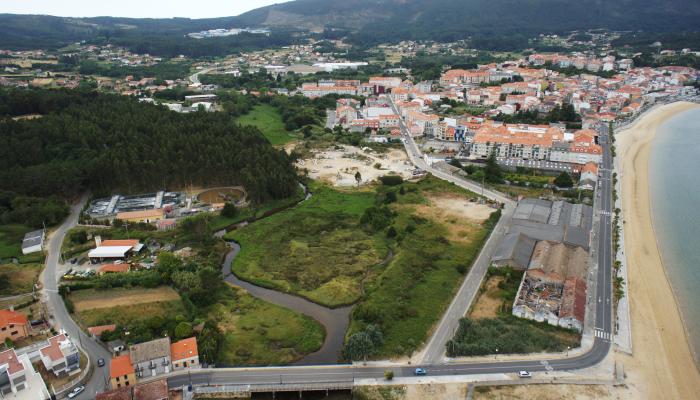
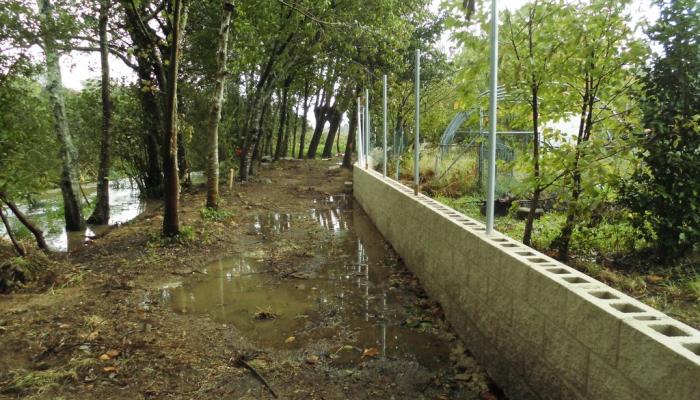
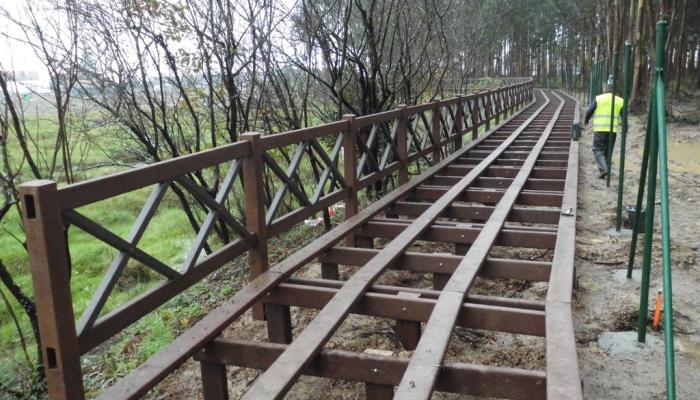
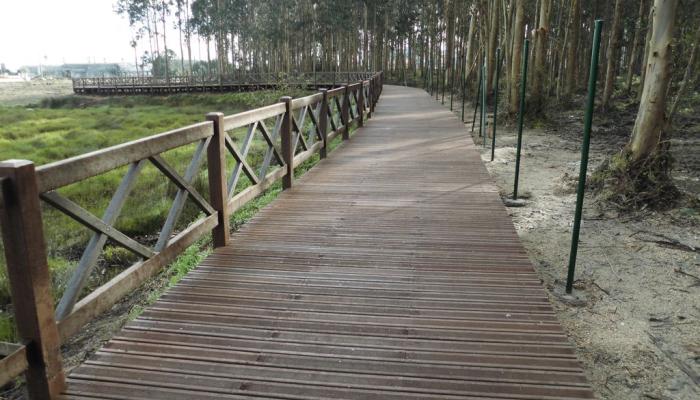
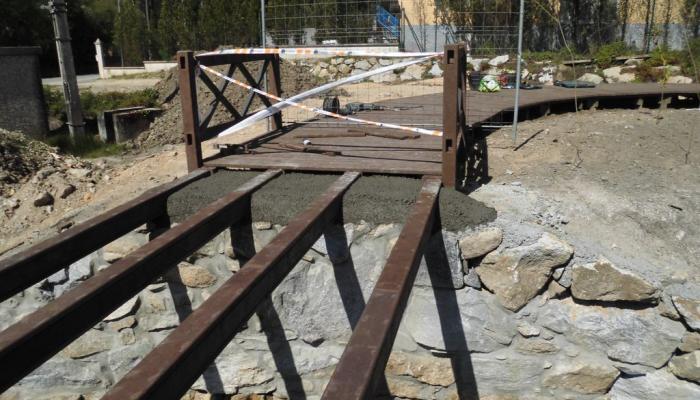
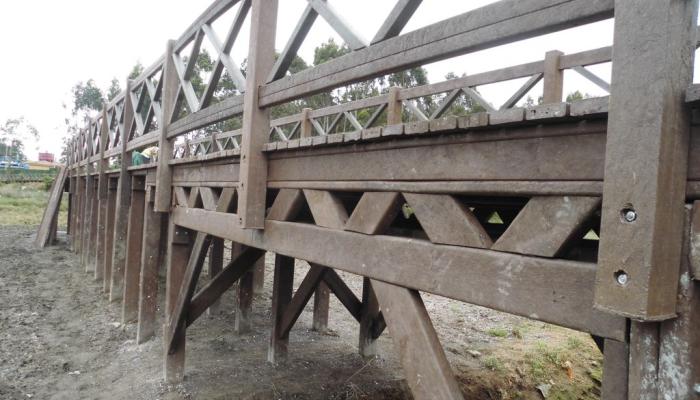
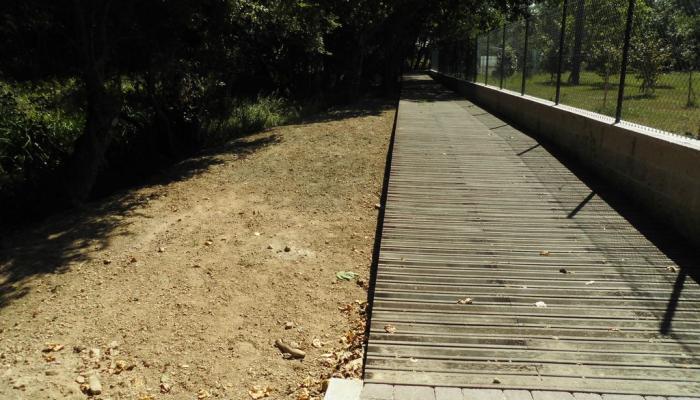
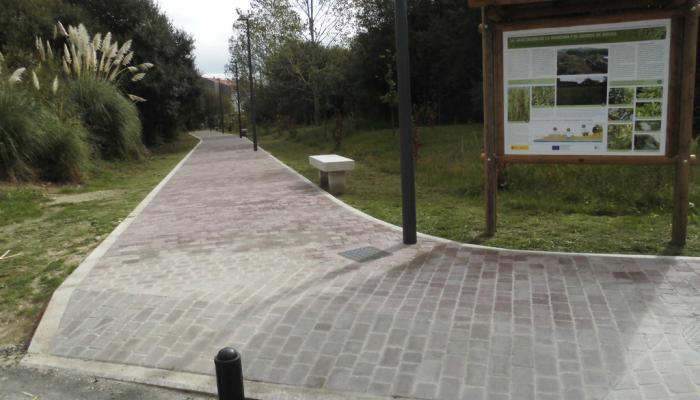
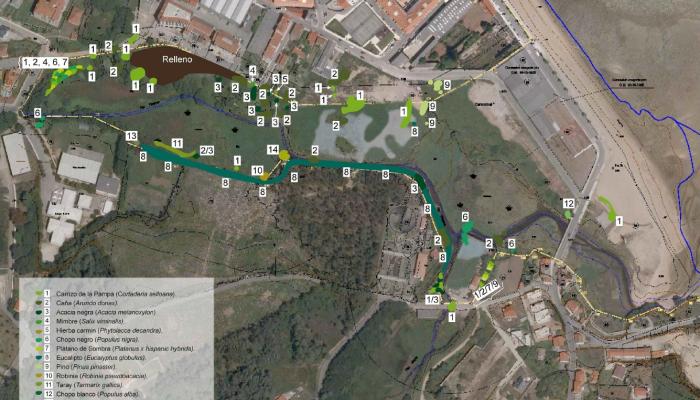
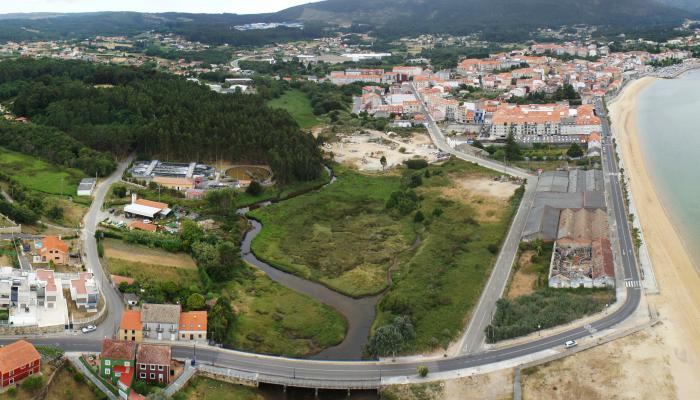
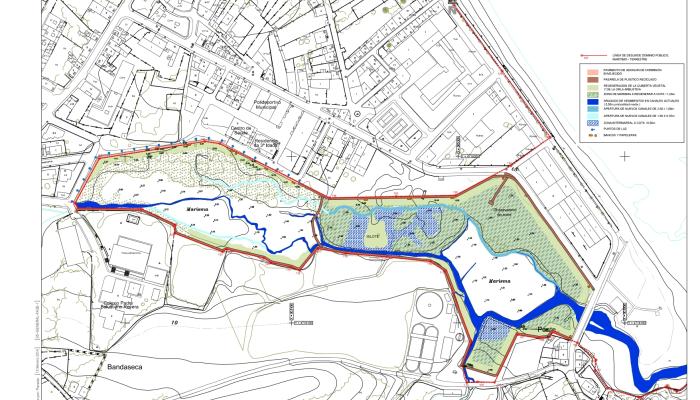
The estuarine and marsh area of A Xunqueira do Areal represents a zone of high ecological value, as it lies at the confluence of three distinct environmental systems — beach-dune, marsh, and marine environments. The tidal flow allows various fish and invertebrate species to move upstream through this ecosystem. The most ecologically significant habitats include the riparian forest and the coastal marsh vegetation, locally known as Xunqueira.
The Galicia Coastal Authority (Demarcación de Costas de Galicia) is undertaking an environmental regeneration project in the marshes of A Xunqueira and Playa do Areal, located within the urban area of A Pobra do Caramiñal. This area, which falls within the Maritime-Terrestrial Public Domain (D.P.M.T.), constitutes the backland of the former canning factories, which had been degraded for more than 40 years due to rubble infill, the presence of a disused wastewater treatment plant (with asbestos-cement components), and direct discharges into the marsh.
The Environmental Regeneration Project for the Marsh Ecosystem of A Xunqueira and the Beach of O Areal in A Pobra do Caramiñal responds to a longstanding social demand for the recovery of this valuable natural area.
Despite its ecological importance, the site had suffered significant degradation due to uncontrolled toxic discharges from a former mining operation, as well as the presence of an obsolete wastewater treatment plant (WWTP) and several derelict infrastructures — including warehouses, walls, and pontoons — that had fallen into almost complete disuse.
This estuarine and coastal marshland area holds high ecological value, with riparian vegetation forming a transition zone between terrestrial and aquatic systems. It provides multiple environmental benefits and supports key ecological functions, such as bank stabilization, flood prevention, river flow regulation, habitat provision for flora and fauna, and enhancement of local biodiversity.
The project’s implementation is structured into several phases:
- Phase I involves the restoration of the entire A Xunqueira marsh area and the demolition of the old wastewater treatment plant (WWTP), which had been used as a storage facility for the municipal works brigade.
- Phase II focuses on the regeneration of O Areal Beach, aiming to recover the historic coastline as it was traditionally known. This phase includes the demolition and/or rehabilitation of several disused warehouses located along the beachfront.
Phase I (Completed)
This phase included the restoration and regeneration of the A Xunqueira marsh, involving the demolition and dismantling of the old wastewater treatment plant (WWTP) and the construction of a pedestrian pathway approximately 2.5 km in length.
Through the environmental regeneration project, discharges into the lagoons were eliminated, and the marsh beds were reconstructed through dredging. Several obsolete infrastructures—including pontoons, walls, and the old treatment plant with its ancillary buildings—were also demolished.
The pedestrian pathway begins near the Salustiano Rey Eiras School in Bandaseca, extends towards the San Antonio Bridge, passes through the WWTP site and a natural islet within the riverbed, and then loops back to the starting point. It also includes the construction of a footbridge linking the Carballeira da Silva area with the sports courts on Rúa Venecia, as well as the installation of a bird observatory.
Depending on the topography and soil characteristics, various construction materials were used, including aged concrete pavers, recycled plastic walkways, granite and quartzite slabs, and asphalt aggregate, along with lighting fixtures, benches, and waste bins placed along the route.
Additional actions included the restoration of vegetation cover and shrub borders, the dredging of sediments from existing channels to an average depth of 0.5 metres, and the creation of new channels of varying dimensions.
- Phase II (pending execution)
During this phase, the entire marsh area will be restored and protected, thereby recovering the coastal ecosystem and implementing measures to adapt the coastline to climate change. These actions will stabilize the lower sections of the shoreline, reduce flood risk across the surrounding areas, and promote the development of new green spaces.
The project is currently awaiting final approval and budget allocation, and no definitive implementation date has yet been established.
The main objetive of the project is the comprehensive environmental regeneration of the A Xunqueira marsh ecosystem and O Areal Beach, located in the municipality of A Pobra do Caramiñal (A Coruña).
In the specific case of the first phase already implemented, this translates into the following specific objectives:
- Recovery of the marsh system with cleaning and opening of channels, regenerating the water flow by eliminating fillings
- Improved soil quality
- Recovery of marsh margins and riparian forest
- Ecological improvement of all habitats, favouring biodiversity
- Recovery of space for public use
In short, the actions carried out during Phase I have been the following:
- Recovery of the spaces occupied by fills, transforming part of the fill surface into marsh and intertidal areas.
- Increase in the width of some of the channels about to close, with the formation of two islands and revegetation of the marsh and island surfaces.
- Soil regeneration by neutralization with biogenic carbonate from shells and topsoil.
- Improvement and recovery of the native tree border with selective clearing and cleaning.
- Elimination of exotic and invasive species.
- Construction of pedestrian path and pontoons with natural and/or recycled materials.
- Installation of various equipment of urban furniture, public lighting and signage.
- Demolitions of disused warehouses and infrastructures, such as the WWTP, with selective removal of debris.
- Delimitation of the D.P.M.T.
- Environmental regeneration of the Lisardo quarry
For the restoration of the marsh edges and riparian forest, invasive plant species such as giant reed (Arundo donax), pampas grass (Cortaderia selloana), and blackwood acacia (Acacia melanoxylon) were removed, and native tree and shrub species were planted to create a protective vegetation cover for the area.
In total, approximately 1,487 riparian trees were planted, including willow (Salix atrocinerea), narrow-leaved ash (Fraxinus angustifolia), hazel (Corylus avellana), and elderberry (Sambucus nigra).
In addition, vegetation was re-established with 1,712 m² of purslane (Halimione portulacoides) and 9,420 m² of sea rush (Juncus maritimus).
Finally, a pedestrian pathway was created along the perimeter of the restored area, built from recycled plastic sourced from urban waste, requiring minimal maintenance throughout its lifespan. The recovery of the site was completed with the installation of a bird observatory.
The actions carried out during Phase I of the project aim to restore and protect the estuarine and marshland areas of A Xunqueira do Areal, a site of high ecological value, by recovering the coastal ecosystem and adapting it to the anticipated effects of climate change. These interventions help stabilize the lower sections of the coastline, thereby reducing flood risk in surrounding areas, while also promoting the development of green spaces and strengthening the forest cover of the area.
This zone is of particular ecological importance, as it lies at the confluence of three distinct environmental systems—beach-dune, marsh, and marine ecosystems. The tidal flow supports a diverse community of fish and coastal invertebrates, which migrate upstream through the estuary.
These actions are designed to prevent saline intrusion into estuaries and aquifers, and to mitigate coastal erosion caused by climate change phenomena such as sea-level rise, loss of land and ecosystems due to warming and shoreline regression, and the increasing frequency and intensity of storms.
The works were carried out by the Galician Coastal Demarcation Office of the Ministry of Agriculture, Fisheries, Food and Environment (MAPAMA), as part of the actions included in the Plan for Environmental Promotion (PIMA), launched to develop projects aimed at reducing vulnerability to the effects of climate change.
The implementation of Phase I of the environmental regeneration project for the marshes of A Xunqueira do Areal was executed by the Tragsa Group, within the coastal protection action plans in A Coruña.
The environmental regeneration work carried out in the marshes of A Xunqueira do Areal, with Phase II still pending execution, represents a successful example of the implementation of the PIMA Adapta Plan, through which more than 80 actions have already been undertaken in the field of coastal management.
This project therefore constitutes a strategic initiative to address climate change in a coastal area highly exposed to its impacts, as the site’s initial condition reflected significant vulnerability to erosion, flooding, and other climate-related risks.
The project implemented during Phase I has been highly successful, having restored the natural functionality of the estuarine and marsh ecosystem, covering an area of over 10,000 m² and approximately 1 km of channels. The intervention re-established native vegetation, and included the dismantling and removal to an authorized landfill of the former wastewater treatment plant (WWTP), located within the maritime–terrestrial public domain.
More than 24,000 m² of surface area were selectively cleared, with the elimination of all identified exotic and invasive species (such as eucalyptus, pine, reed, and plane trees) and the complete removal of over 30,000 m³ of anthropogenic fill material.
In addition, approximately 3,750 meters of channel banks were revegetated, and soils were remediated through neutralization using biogenic carbonate from shells mixed with topsoil, at a rate of 60–70 kg of shells per cubic meter of dredged material.
Four pontoons and a pedestrian walkway made from recycled plastic were also built along the edge of the marsh, restoring and protecting the coastal ecosystem and stabilizing the lower parts of the coastline, thereby reducing flood risk and enhancing the development of green spaces.
Overall, these actions have restored the ecological integrity of the estuarine and marsh area, recovered its ecosystem functionality, and improved protection against flooding and soil erosion, while fostering forest regeneration and creating a healthier, more attractive recreational environment for local residents through the development of green spaces and pedestrian routes.
The original project for the environmental regeneration of the marshes of A Xunqueira do Areal was signed by the State Coastal Demarcation in Galicia and tendered in May 2014, with a total budget of € 3,461,632, to be executed in two phases:
- The first (Phase I), focused on the marsh itself, had a budget item of €1,856,613.
- The second (Phase II), basically focused on the old canning warehouses and the sandy area, originally had an item of €1,605,019.
To date, only Phase I of the project has been executed, the final cost of which has amounted to the final amount of €1,714,527.22.
Although it is expected to continue with the tender and execution of Phase II, with the fundamental objective of demolition and/or rehabilitation of warehouses and the environmental recovery of a large area, there is still no defined date for action.
The project for the environmental regeneration of the marshes of A Xunqueira do Areal was planned and executed by the Ministry of Agriculture and Fisheries, Food and Environment (MAPAMA), within the actions contemplated in the Plan for the Promotion of the Environment (PIMA).
The project is mainly affected by Law 2/2013, of 29 May, on the Protection and Sustainable Use of the Coast and Modification of Law 22/1988, of 28 July, on Coasts.
This Law 2/2013 constitutes an integrated whole aimed at guaranteeing the protection of the coastline and providing legal certainty, and is structured in two large blocks:
- the first involves a partial and profound modification of Law 22/1988, of 28 July, on Coasts
- the second establishes the new regime of extraordinary and selective extension of the concessions granted under the previous legislation, and a heterogeneous set of provisions that complement the modification of the Coastal Law
The project is also affected by the General Municipal Planning Plan of the City Council of A Pobra do Caramiñal (A Coruña), approved according to the Order of March 1, 2007 of the Ministry of Territorial Policy, Public Works and Transport of the Xunta de Galicia.
The executed Phase I had a total effective duration of about 12 months, having begun its work in July 2015 and having concluded in October 2016.
Phase II, pending execution, does not have any defined implementation period.
https://www.miteco.gob.es/es/costas/temas/proteccion-costa/actuaciones-proteccion-costa/a-coruna/150706-marisma-a-xunqueira-do-areal.aspx
Babio Arcay R. 2017. Environmental regeneration of the A Xunqueira Marshes and Areal Beach. T.M. A Pobra do Caramiñal (A Coruña). Phase I. 24 pp.
Carlos Gil Villar
Head of the Coastal Demarcation of Galicia(A Coruña)
Calle San Pedro de Mezonzo, 2 bajo.
Phone: 981303899
E-mail: bzn-costascoruna@miteco.es



